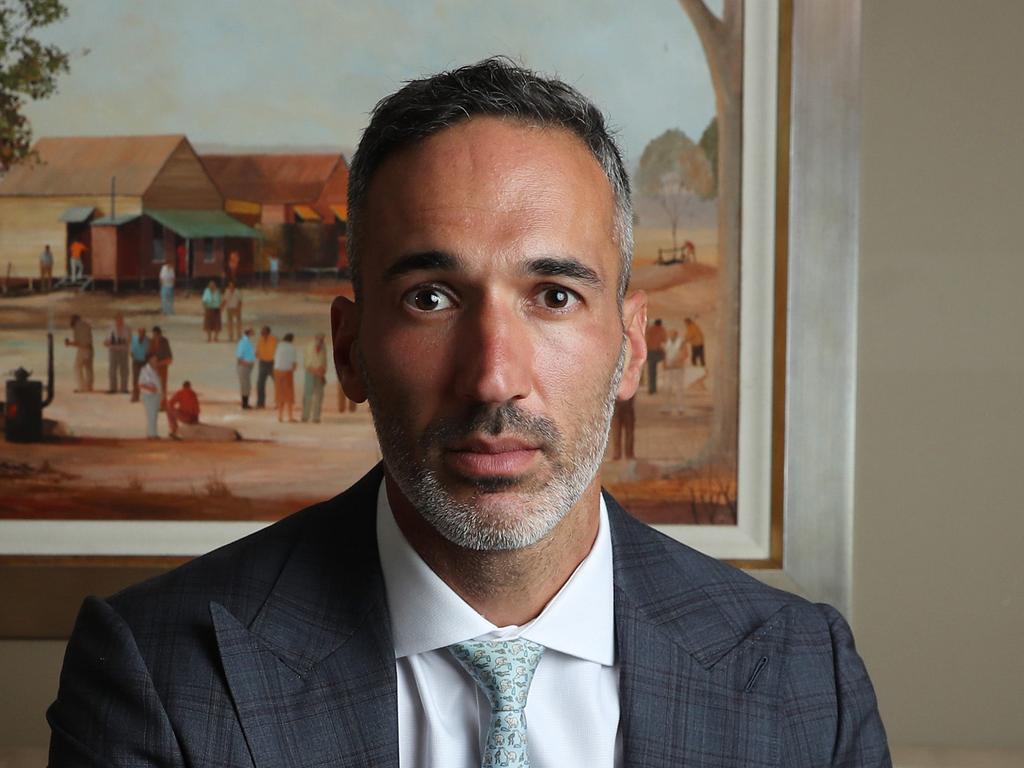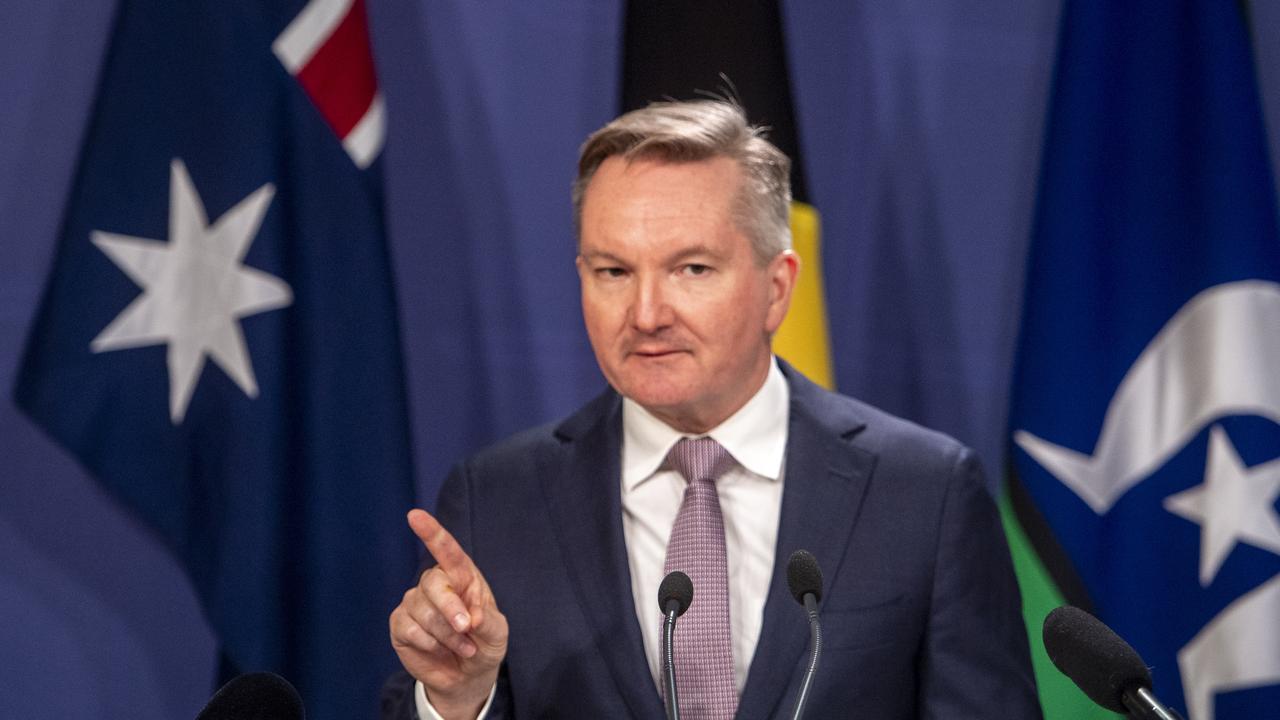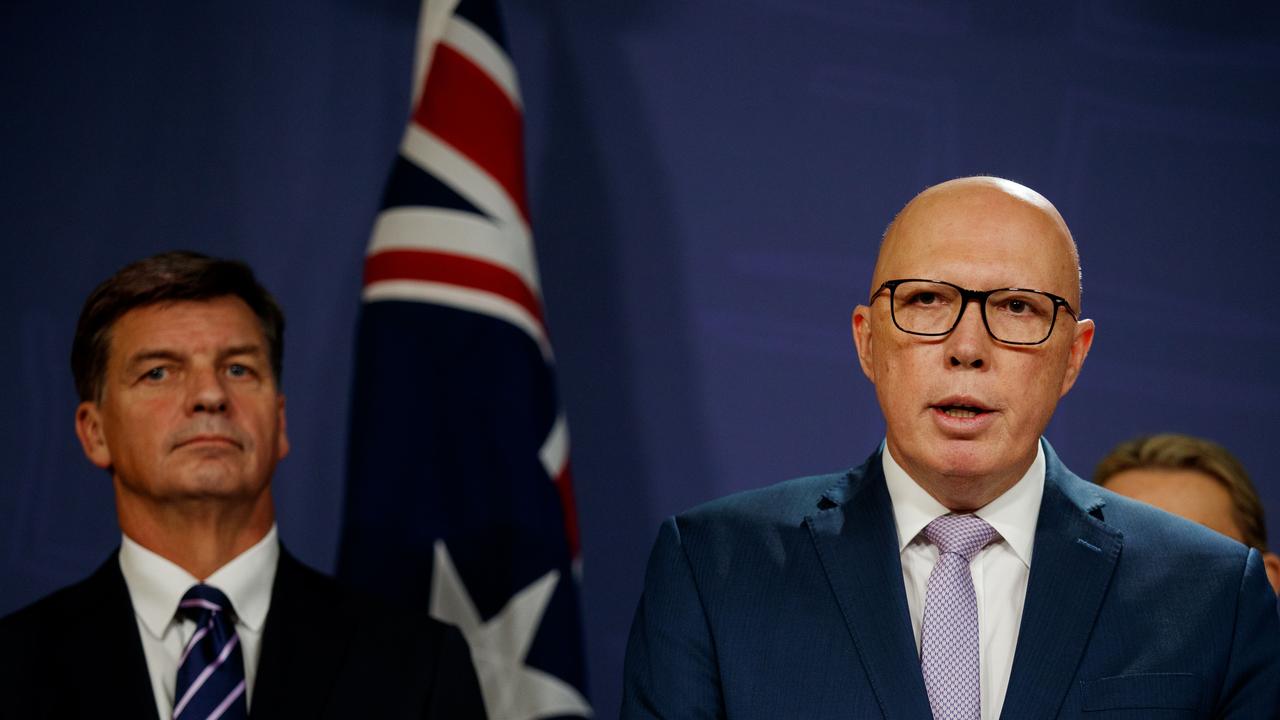
Labor is bleeding support in the two states it needs the most.
In NSW, the federal party’s primary vote is down to just 30 per cent. This is reaching danger levels. By comparison, Labor’s primary vote in NSW at the 2013 election when the Gillard-led minority government was removed from office was at 33 per cent.
It’s a similar story in Victoria, once the stronghold for Labor. Its primary vote is now down to 31 per cent.
The problem for the Coalition is that despite the collapse in support for Labor, the love isn’t flowing back all its way.
The Coalition’s primary vote has also gone backwards in NSW – down to 38 per cent – while in Victoria it is also on 38 per cent, although this is a high watermark.
While the Coalition is marginally in front in a two-party-preferred basis in NSW – 51 to 49 – it is trailing 48 to 52 in Victoria, due to the strength of the Greens and its preferences.
The two eastern states holding the most seats are now experiencing a major-party catharsis, with votes spraying to independents and minor parties.
What this means for the election outcome is anybody’s guess. A very ugly hung parliament most likely.
Lifting the bonnet on where the swings are occurring makes for a more difficult analysis. And any outcome is possible.
Several key demographics are now moving sharply against Labor. The problem for Peter Dutton is that in only one of those groups is swinging towards the Coalition.
For reasons that can only be explained by voters themselves, a flight to other minor parties and independents is occurring in the most unlikely of places.
First the good news for the Coalition. Dutton’s team is now ahead of Labor on a two-party-preferred basis in the 50 to 64-year-old age bracket for the first time. Dutton is also the preferred prime minister.
Labor has gone substantially backwards among this age group, who are old enough to remember the Howard years, but with slightly less mortgage exposure than the age group behind them.
And all of that vote has shifted into the Coalition column. Dutton is reaching these voters. But it doesn’t materially change the outcome.
The problem for the Liberal leader is that in other groups, where voters have moved against Labor, they aren’t warming to him. Their votes are going anywhere but.
Another demographic in rebellion belongs to a key plank of Labor’s base. Ethnic and migrant communities have moved in the past three months in a demonstrable way.
Labor is down five points on primary vote in this demographic – categorised as those who speak another language other than English. Anthony Albanese has also taken a significant hit on his personal numbers.
Unsurprisingly, these communities aren’t flocking to the Liberal Party. Nor the Greens. The movement is toward other minor parties and independents.
While the Hamas/Israel conflict will be a factor within Muslim communities, cost-of-living concerns are also acute among the broader working-class migrant communities.
There will be a tendency by some to overstate the Muslim vote within this diverse demographic.
Taken at face value, the swings against Labor in NSW are significant enough to put four seats potentially at risk – Gilmore, Bennelong, Robertson and Paterson – and one or two seats in Victoria.
Taking into account the AEC’s redistributions, Labor could lose between seven and nine seats nationally when taking into account swings against it in WA as well, with no net movement in Queensland or South Australia but the possibility of losing Lyons in Tasmania and Lingiari in the Northern Territory.
The worst-case scenario for Labor would be 69 in the House of Representatives, compared to 63 for the Coalition with the Greens, and independents making up the rest of the 150 – which the next parliament will be reduced to.
This would be a fair assessment, if not for the fact that the demographics that are swinging may end up being confined to strongly held Labor seats which are not at great risk of falling.
Labor has made up ground among the 18 to 34-year-olds – which largely go left – where the contest is between it and the Greens more than the Coalition. It has improved its position to 62 to 38 on a two-party-preferred basis.
The over 65s – who largely go right – are also coalescing around what they know, with 60 to 40 in favour of the Coalition.
As always, the battleground remains in the middle.
And while Dutton and the Coalition have lifted significantly among 50 to 64-year-olds, he isn’t making ground anywhere else. And he will need to.
What should trouble both Albanese and Dutton, and their campaign strategists, is that the swing is on in the 35 to 49-year-old age demographic, but neither of the major parties are the beneficiaries.
It is this group of voters, sometimes referred to as the mortgage belt or Middle Australia, that decided the 2019 election and look set to decide the next.
For the first time the Coalition is marginally ahead on the primary vote in this demographic, which would be significant if not for the fact that this is only by virtue of not going backwards as much as Labor. Both parties have fallen.
Meanwhile, the vote for other minor parties has soared five points to 13 per cent among this group. Something strange is going on with Middle Australia when it starts backing outliers.
The only explanation can be deep disillusionment.
Dutton is a long way from having the next election fall in his lap, but if the Coalition managed to get its act together, he could give it a serious nudge.
On the other hand, if Albanese managed to refocus Labor’s attention on the voters who matter most, he could arrest the decline.
The subtext to all this is that while voters aren’t happy with Labor, they don’t yet see the Coalition as a solution to the issues that are aggravating them.





